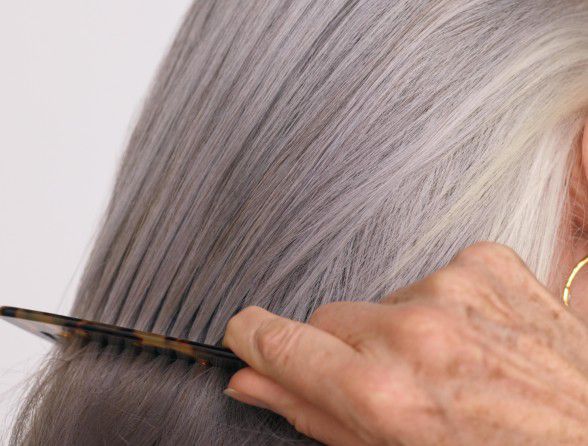A doctor debunks common cellulite myths
Whether you celebrate or scorn it, it pays to get to know your fact from fiction
Cellulite is a 100% normal, unavoidable fact of life that affects most of us to varying degrees. Revered (thank you, Rubens) and reviled in equal measure over the centuries it’s still something that continues to confuse and confound and, despite the fact that we’ve had it since day dot (much like, say, elbows or ears), there is still a surprising amount of misinformation out there.
But before we sort the fact from the fiction, let’s take a moment to understand exactly what so called ‘orange peel’ actually is. ‘Cellulite is the skin dimpling and lumpiness on the skin surface of the thighs, buttocks and abdomen of nearly all women (and some men),’ explains top cosmetic doctor, Dr Wassim Taktouk. ‘It’s caused by fatty protrusions into the dermis layer of the skin and although it can be distressing to some, it’s very much a benign condition that causes no harm.’ So with the help of Dr Taktouk, we’ve attempted to demystify some of the most common claims about cellulite…
Men don’t get cellulite – myth
While cellulite tends to affect more women than men, it’s not an exclusively female phenomenon (up to 90% of women have cellulite compared to 10% of men). Why do more women get it? ‘Quite simply hormones and genetics. It’s more common in women due to the different distribution of fat, muscle and connective tissue and the role that the female hormones play on these tissues,’ says Dr Taktouk.
Cellulite is caused by a build-up of toxins – myth
‘This is one of the more common myths,’ Dr Taktouk explains. ‘As already discussed, cellulite is caused by underlying fat deposits being pushed through the weakened layers of connective tissue. Connective tissues can be weakened by hormones, lack of exercise, poor muscle tone and excess fat, it is not caused by “toxins”.’
Cellulite gets worse with age – fact
‘Unfortunately this is true, particularly for women as they approach the menopause,’ says Dr Taktouk. ‘Declining oestrogen levels affect blood flow and this allows the connective tissue layers to weaken, giving the fat layers an opportunity overwhelm them.’
Only overweight people get cellulite – myth
This is ‘simply not true,’ according to Dr Taktouk. ‘Being overweight does not necessarily make the appearance of cellulite more noticeable as it’s all down to the strength of your skin’s connective tissues and collagen fibres. Cellulite happens to women of all shape and sizes.’
Exercise makes cellulite less noticeable – fact (mostly)
‘Yes is the truthful answer for most,’ says Dr Taktouk. ‘Fat contributes to the cause of cellulite, therefore increasing muscle tone and exercising can minimise the problem and improve the overall appearance of orange peel skin.’ However the idea that only cardio or running can reduce cellulite is false, adds Dr Taktouk. ‘To really improve cellulite a combined approach of weight loss and strength training is the best approach. As muscle lies below the pockets of fat that protrude against the skin, increasing muscle tone will smooth the appearance of the overlying skin.’
Cellulite creams don’t work – fact (up to a point)
‘There are many creams marketed to improve or even get rid of cellulite, but very few work and most are not evidence based,’ says Dr Taktouk. However, whilst creams cannot penetrate down to the pockets of fat responsible for that tell-tale dimpling, bolstering the connective tissue of the skin which allows these pockets of fat to push through can help to improve its appearance. ‘Currently retinoic acid seems to be the only truly affective topical cream as it works by increasing dermal collagen thickness and the contour of the elastin fibres and should be used over a period of at least six months.’
Nothing gets rid of cellulite for good – fact
While it is true that there’s no permanent solution to cellulite there are a number of non-invasive treatments which have been shown to work in the shorter term. ‘There are a whole host of treatments offered in the aesthetics world to combat and treat cellulite, however it is vitally important to research these before going ahead,’ warns Dr Taktouk. ‘Endermologie is a device that mechanically massages the fat in the affected area and treatments repeated twice weekly appear to reduce the appearance, but the treatment is costly and there is little evidence of long term efficacy.
Liposuction is effective for removing large areas of deeply placed subcutaneous fat, however the fatty tissue of cellulitis is close to the skin surface where liposuction is more risky, so if considering this, ensure you have researched the clinic. Subcision is a surgical procedure using a needle to cut fibrous bands between the fat lobules which may temporarily improve skin dimpling but long term efficacy is uncertain. Bipolar and unipolar radio frequency devices which use electromagnetic radiation to break up fatty deposits are relatively new treatment options for cellulite.
Finally, ultrasound devices destroy fat cells and can be effective for some patients while laser-assisted lipolysis which destroy targeted areas of fat while tightening the skin often give good results too.’
The best products for smoothing and improving the look of your limbs? Prepare to bare…







